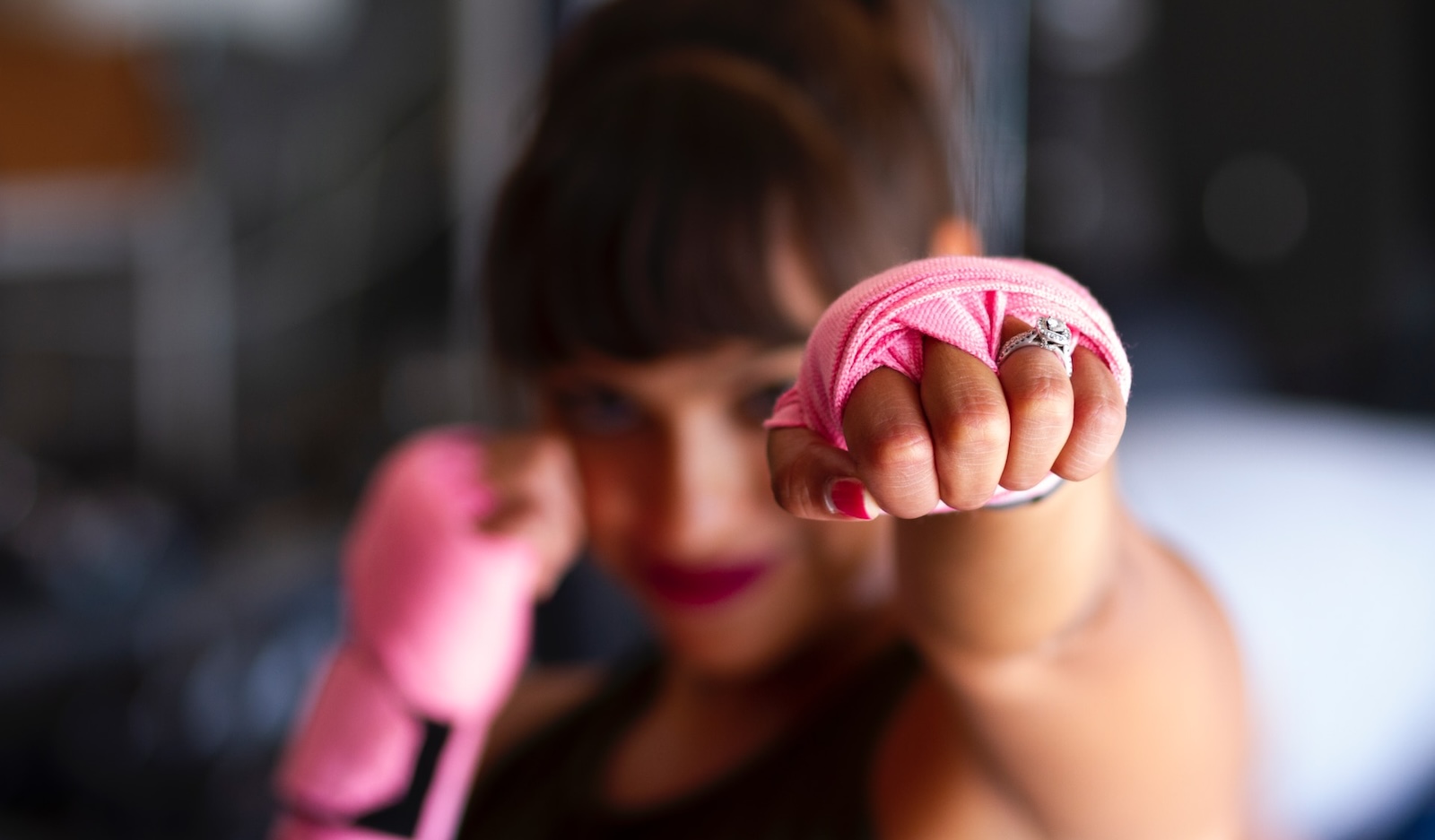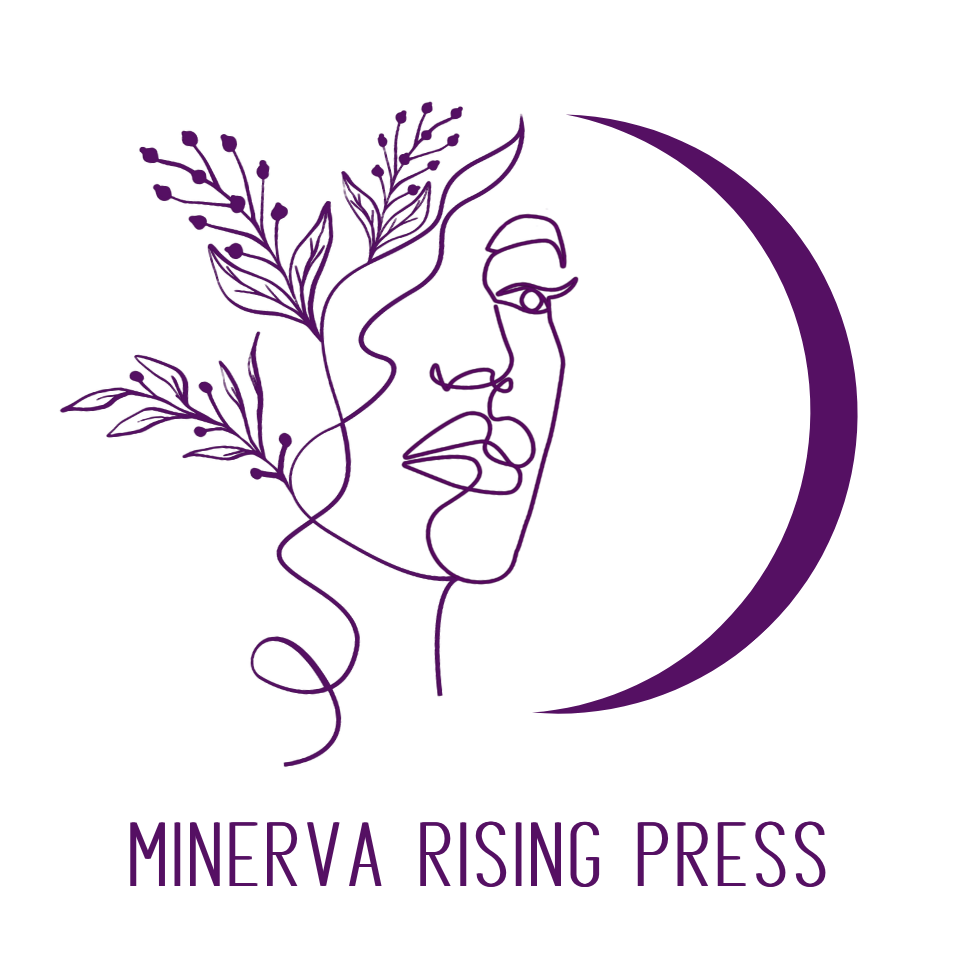Fight Like a Girl by Justine Payton

CW: sexual violence
The man who settled himself between my legs was twice my size. I immediately felt suffocated beneath the pressure of his weight, each inhale rattling against my throat. I was aware of the contours of his legs and genitals pressed tightly against my own, the framing of his arms on either side of my neck. When the fight began, my hands pushed futilely against his chest while he proceeded to twist the collar of my gi – a two-piece garment commonly worn in the martial art of Brazilian jiu-jitsu – around my throat in a choke we had learned a few weeks prior. I felt drips of sweat from his forehead fall onto my face and combine with my own beaded perspiration. There was the strain of exhaustion, the panic of restricted breath. Nausea simmered in the depths of my stomach and spit the taste of bile into my throat.
I burst into tears, thumping my fist against his arm. He immediately released me, his eyes full of confusion and concern. Racing to the bathroom, gasping for breath, I wiped away tears with shaking and sweating hands. Standing in front of the mirror, I tried to breathe away the memories that flashed across my mind. This man had done nothing wrong, but my body remembered the sensation of men and sweat and exhausted helplessness.
I stared at my reflection, looking deep into eyes dulled by the harshness of fluorescent lighting. You are strong, I said to the woman looking back at me. You survived.
Her face cast shadows of doubt.
You can do this. We have to learn how to do this.
***
Growing up in midwestern, suburban America, I learned early on that physical prowess and aggression were not encouraged or expected in a girl. Surrounded by an assumption of submissiveness and fragility, I listened as boys threw insults at each other – “You fight like a girl;” “Don’t be a pussy.” When I began to play sports, I listened when my dad admonished – “Don’t throw like a girl;” “Stop running like a girl.”
In middle school, girls would fight by slapping, pulling, and scratching and it was called a “cat fight.” On the occasion that a girl threw a good punch, my classmates snickered about how she “fought like a boy.” It was easy to absorb the lessons being taught from all sides – girls were by nature physically inferior, incapable of a legitimate fight. To be strong and aggressive, one had to be like a man.
I was a precocious and curious child, and I spent hours of my childhood exploring – lifting rocks to find rollie pollies, worms and fast-moving centipedes; watching squirrels build nests and bury nuts beneath our towering black walnut tree; reading fantasy books about lions, bears and mythical beasts. When I found a praying mantis perched on our tent during a summer camping trip, I was captivated by its long-lined body and stoic pose. Its beady eyes were unflinching. Its hands, folded in apparent reverence, combined with its name to make me wonder if it prayed to the same God that I had been taught to worship every Sunday. It was this Sunday God who blamed a woman called Eve and her weakness for the downfall of man.
When we returned home, I spent a morning on the carpeted floor of our local library reading about the mantis religiosa. Flipping through pages, I read a condemnation of strong and aggressive women that reached into the animal kingdom. The female praying mantis, larger and more powerful than her male counterpart, would at times brutally consume her partner after mating. For this, she was described as a monster – the original femme fatale of the phylum Arthropoda. She embodied so much of what is feared in a woman – sexual potency combined with dominance and strength. I was enthralled, and terrified, by her power and potential for violence.
Increasingly curious about the distinction between species, about the divergent expectations for women that I felt constricted by, I explored other examples of female might in the animal kingdom. There were the female spotted hyenas who led their packs, stronger and more aggressive than the males. They were in good company with the leadership of female orcas and African elephants, elite protectors of their kind. They were matched by birds of prey – eagles, falcons and hawks – whose females were larger and more prone to acts of violence than the males. Unrivaled were the bonobos, separated only by the Congo River from patriarchal chimpanzees, who were a matriarchal species and utilized bisexual sex to keep peace within their society. When threatened, they formed female-led coalitions to chase away aggressive males.
The animal kingdom revealed truths to me that the culture in which I was raised had long lost and damned – that strength was feminine, dominance was feminine, aggression was feminine, defense was feminine. Femininity amongst these animals was not a construct contained within the limits of biology and physicality. I envied their ability to live in an alternate reality from the one that I knew.
***
I was 29 years old when I attended my first Brazilian jiu-jitsu class in Gainesville, Florida. I was tired of gripping keys between my fingers when I entered a store or walked alone; tired of my stomach plunging whenever a man hollered at me while I ran; tired of feeling like my body was up for the taking as easy prey in a land of hungry predators. I wanted to be able to defend myself, effectively and confidently. In contrast to the yoga studios that I sometimes frequented, Brazilian jiu-jitsu was a world where “shut up and train” and “no puking on the mats” were the recited mantras. It was a world where one learned to fall and get back up before learning to fight, where injuries and pain were an expected consequence of advancement. It was a place that men dominated in number.
Walking into my first class, I was one of three women amongst over twenty men. The thick cotton gi I was wearing felt heavy and cultish. I stumbled through the warm-ups of somersaulting forward and backward, “shrimping” – a defensive maneuver from one’s back involving an upward hip thrust – and practice “break falls” from the front, back and side. My body seemed incapable of following the directives of my mind, and I flailed around with an embarrassing lack of coordination. Bruises blossomed in shades of purple and blue over the skin of my arms, legs, and hips like an unveiling garden.
During that class, we learned how to throw someone of a heavier weight and taller height over our hip and down to the floor. When I completed the technique for the first time, eyes gazing down at the human I had just flung to the floor, I felt empowered. Powerful. There was something immediately thrilling about learning to physically dominate and subdue another. Since Brazilian jiu-jitsu was designed for a smaller and weaker opponent to be victorious, I could learn how to leverage my unique physical and psychological strengths against an opponent. Even against a man.
Later that night, I rinsed the sweat off my body and traced the darkening bruises. These were not the marks of violent men laying claim to my body. These were of my own choice and making, and they shimmered like a badge of honor. The desire arose to explore the violence I was capable of – not out of a want to perpetrate harm, but to know the power and self-protection that I possessed.
I would eventually learn that for those who train in Brazilian jiu-jitsu, each skill and fight can be an experience of simulated death or, if in the role of victor, simulated killing. It is a chosen dance with death, rather than an unwilling one. Enthralled by the promise of competence, I began training three times a week.
***
Just as I had learned as a girl that physical strength and aggression were the realm of boys, adolescence taught me that men would often take what they wanted from me, even when it was not offered.
I was eleven the first time a boy grabbed my breasts in the swimming pool and demanded to see my tits. Thirteen when one kissed me without asking. Fourteen when hands held my head so that he could thrust in and out of my mouth. I was eighteen the night I was raped. I learned that men would take from my body whatever they desired. As I grew older, I felt increasingly helpless in the face of their dominance. Guarded and on edge, wary of catcalls and wandering eyes, I feared being alone unless it was behind a locked door.
In the absence of a fight, I fell silent.
***
I was two months into training when the panic attack occurred. Determined not to let it happen again, I stayed late after class to drill over and over again. Sweat and tears fell from my body and mixed on the mat. I struggled to let go of the fear the various positions evoked, as well as resistance to the thought of harming another. I questioned my ability to follow through in real-life – whether I could really complete the choke, really break an attacker’s arm. Seeing my persistent hesitation, the coach reminded me: “Until you accept that your life – and your body –are worth protecting, despite whatever harm may come to another in its defense, you will be unsuccessful.” His words were giving wax-on, wax-off vibes, but I listened.
I continued to drill, and with each round my muscle memory improved. The transitions from one position to the next began to flow without conscious concentration, freeing my mind to focus on the mentality needed to push each move to fruition. Aggression, dominance, and strength – these were the catalysts. As I allowed them to arise uninhibited, I felt my body and mind untether from decades of imposed and assumed limitations.
My coaches encouraged my unveiling aggression as fear was replaced by a determined self-assurance. I had tapped into an internal reservoir of power that was undeniably mine to possess. It pulsed with an electric energy, pulling me off the mat each time I fell down.
I began to fight like a girl.
The world began to change.
I was no longer prey. If threatened, I could now play the role of predator.
***
On the day I decided to let a man climb between my legs again, the room was thick with Florida’s humid heat and the build-up of sweat. Standing in line on the mats, engulfed by a gi that flared loose around my arms and thighs, the square knot cinched around my waist was the only intimation of a feminine form. I felt self-aware and beautiful in a way that was unique to the self-acknowledgement of power and strength. It was a beauty that existed for my own edification.
The padded blue mat clung to my feet as I shifted my weight slightly from side to side, watching as my toes stuck and squeaked against the familiar surface. A giant fan whirred in the corner, pushing hot air across my face as I licked my lips, picking off dry patches with my teeth. Adrenaline pulsed through my blood in anticipation. We bowed our heads and uttered a collective “oos.”
Laying down on the mat with my legs spread wide in a “V,” I watched as he settled himself between them, groin to groin. My body tensed at the intimate contact, but I wrapped my legs around his back to lock him into place. I breathed into the image of a long legged praying mantis. My concentration narrowed into a singular focus, fight.
I reached behind his neck to pull him close to my own body. His sweat smeared into the exposed skin on my arms, creating a slickness between us. I felt his breath pushing out against my chest, hot and heavy. But this is what I needed to do. I had to bring him close to defeat him.
Dropping one of my legs, I slid the other in between us, simultaneously pulling his body towards my head. In a calculated leveraging of weight, my legs scissored to flip him over to one side. As he flew to the left, my body followed, momentum and gravity placing me on his chest.
My legs clenched on either side of his waist, and I sat my weight down, pressing into the lower half of his body. My hands and arms reached as parallel lines across the front and back of his neck. I squeezed. His neck was thick, fatty, and I felt the heat of his skin pulsing against my own. I watched his eyes darken with the realization – this choke, if brought to completion, could kill him. He tapped my arm to signal defeat, and I released my holds.
The mat beneath us was covered in the sweat of our exertions. As I rolled off his body, my hands slipped over the blue, tingling with the thrill of victory.
***
At the end of class, we again stood in line and bowed with a unanimous “oos.” I swiped at hair that had fallen across my forehead, having escaped my braids. Entering the bathroom, I splashed cold water across my face and neck, rinsing off my own sweat as well as his. I looked into the mirror, seeking the gaze of my own eyes.
Yes, I said with a smile. We learned how to do this.
Bowing to myself with gratitude, I joined hands in reverence with the praying mantis to honor what we inherently carry – the strength of a warrior; the strength to survive; the strength to fight like a girl.
 Justine Payton is an MFA candidate at University of North Carolina-Wilmington. She has been published in the Wild Roof Journal, HerStry, The Corvus Review, and The Masters Review. An avid hiker and ecofeminist, her writing most often focuses on the themes of resilience and finding wonder in the small things.
Justine Payton is an MFA candidate at University of North Carolina-Wilmington. She has been published in the Wild Roof Journal, HerStry, The Corvus Review, and The Masters Review. An avid hiker and ecofeminist, her writing most often focuses on the themes of resilience and finding wonder in the small things.
